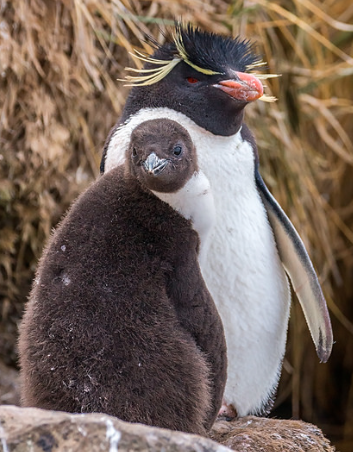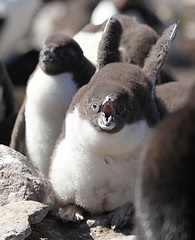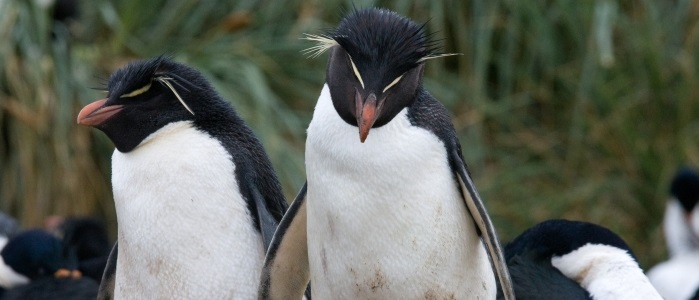Life History & Reproduction
Eudyptes chrysocome (Southern Rockhopper
penguin) has an interesting and slightly complicated reproduction
process. Southern Rockhopper penguins have low reproductive rates, live
in pairs, and are monogamous, meaning they have one mate for life.
Furthermore, Eudyptes chrysocome has a life span of about ten years.

To begin reproducing, the female arrives at a colony to mate with a male. About two weeks after mating, the female lays the first of its two eggs. The first egg laid is referred to as the “A-egg”, and the second, larger egg, is the “B-egg”. Offspring formed from the A-egg are usually short-lived because the egg has a high corticosterone concentration level, while the B-egg has normal corticosterone concentration levels. Elevated levels of corticosterone could cause the chick to die as an embryo and if the chick survives, then it is likely to have problems early on in its development, such as growth, which would result in a lower fitness. Therefore, the Southern Rockhopper Penguin raises the B-chick originating from the B-egg, which takes less time to form and hatch.
The environment, in which the mother breeds, however, determines
corticosterone levels. It was found that environmenta l breeding
conditions within colonies impacted albumen (a protein within the egg)
corticosterone deposition. As the environment worsens, more
corticosterone is deposited into the A-egg because the A-egg takes
longer to form. Corticosterone is passively transferred with poor
maternal conditions (Poisbleau et al. 2009; Dehnhard et al. 2013a). Once
the eggs are laid, the male spends most of his time guarding the chicks.
The female will venture out to find food to bring back to the male and
their chicks (Dehnhard et al. 2013a).
l breeding
conditions within colonies impacted albumen (a protein within the egg)
corticosterone deposition. As the environment worsens, more
corticosterone is deposited into the A-egg because the A-egg takes
longer to form. Corticosterone is passively transferred with poor
maternal conditions (Poisbleau et al. 2009; Dehnhard et al. 2013a). Once
the eggs are laid, the male spends most of his time guarding the chicks.
The female will venture out to find food to bring back to the male and
their chicks (Dehnhard et al. 2013a).
To learn more about the life history and reproduction patterns of the Southern Rockhopper penguin, visit MarineBio and look under the "Life History" section.
Back To Form & Function
Home
References Contact Us
Continue To Interactions
